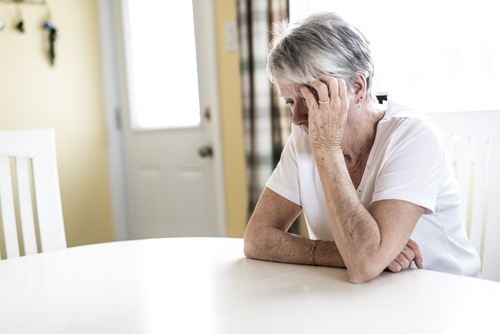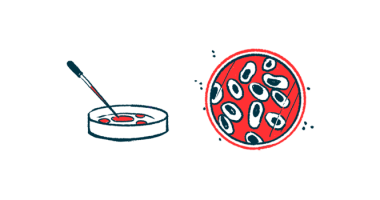Survey Sheds Light on the Effects of Orthostatic Hypotension in Parkinson’s Patients

Neurogenic orthostatic hypotension (nOH), a sudden drop in blood pressure when changing positions, can significantly affect Parkinson’s disease patients’ function and quality of life.
A recent survey highlights the need for improved awareness and education on the effects and burden of this condition, which affects one in every five Parkinson’s patients.
The survey was developed by Lundbeck in collaboration with The Michael J. Fox Foundation for Parkinson’s Research, and three specialized neurologists from Vanderbilt University, the Mayo Clinic College of Medicine, and Harvard Medical School.
The results of the survey were reported in the study “Characterization of the symptoms of neurogenic orthostatic hypotension and their impact from a survey of patients and caregivers,” published in BMC Neurology.
nOH is characterized by the inability to maintain adequate blood pressure and flow to the brain upon standing, resulting in dizziness, lightheadedness, fatigue, and blurred vision among other symptoms.
This condition is caused by impaired release of the signaling molecule norepinephrine upon standing, and is due to dysfunction of the autonomic nervous system often associated with an underlying neurodegenerative disorder, such as Parkinson’s disease.
The U.S.-based survey was conducted online from Aug. 26 to Oct. 3, 2016, and included 363 patients with Parkinson’s disease and 128 caregivers.
Among patients, only 36% had been formally diagnosed has having nOH. Still, most patients reported having experienced long-term nOH symptoms, with 48% and 21% of respondents reporting to have been living with this condition for more than 5 and 10 years, respectively.
About 34% of patients somewhat or strongly agreed that nOH symptoms emerged before they developed motor symptoms of the disease, and 44% reported those were more troublesome than motor symptoms.
The most frequent nOH symptoms experienced were dizziness or lightheadedness, fatigue when standing, and difficulty walking, with most patients reporting multiple events a day when they were standing for long periods of time or had a change in position. Other not-so-frequent symptoms reported included blurry vision, pain running down neck and across shoulders, cognitive difficulties, faintness, and difficulty breathing.
Connect with other patients and share tips on how to manage Parkinson’s Disease in our forums!
Approximately 87% of patients and 95% of caregivers stated that nOH symptoms had an overall negative effect on patients’ ability to perform daily activities. In addition, 59% of patients reported that nOH also affected their quality of life, 42% said it robbed them of their independence, and 40% said nOH changed their lives drastically.
In particular, the respondents noted that nOH symptoms significantly affected patients’ capacity to perform exercise, do housework, travel, spend time out of the house to run errands or socialize, drive, enjoy their hobbies, and entertain at home.
Although 75-77% of the participants stated they were satisfied with the quality of communication with their healthcare providers, about 33-41% said it took more than six months from symptom onset to discuss their nOH condition.
“Approximately one-fourth (26%) of patients and a third (33%) of caregivers somewhat or strongly agreed that patients had to mention their nOH symptoms repeatedly to their healthcare provider to draw attention to the problem,” researchers wrote.
Despite half of the patients stating that nOH symptoms made them feel anxious or worried, 60% somewhat or strongly agreed they often hid or minimized them. In addition, 55% of the respondents agreed that patients did not initiate a discussion about their nOH manifestations with a healthcare provider unless the symptoms were severe.
“This survey reinforces what I hear from my patients,” Daniel Claassen, MD, associate professor at Vanderbilt University and one of the study authors, said in a press release. “Given the challenges of disease management, especially in Parkinson’s Disease, where patients have many complex medical issues, orthostatic [postural low blood pressure] symptoms are not always addressed in the clinical visit, despite their burden.”
“Patients need to know that orthostatic symptoms related to autonomic dysfunction can be managed and should be discussed with their healthcare provider,” Claassen added.
After discussion of nOH with their healthcare provider 53% of patients reported they received a solution to better manage their symptoms. About 25% of patients were not counseled to do anything to manage their nOH symptoms.
Some of the recommended interventions included avoidance of quick positional changes, increased fluid intake, adjustment of Parkinson’s medications, increased salt intake, use of compression garments, elevating the head of the bed, and avoiding hot environments.
“The compelling insights from this survey helped us gain a more intimate understanding of the difficulties faced by patients and care partners,” said Arthur Hewitt, PhD, senior scientific advisor in neurology at Lundbeck and one of the study authors. “Lundbeck will leverage this understanding to provide better education and support for this challenging condition.”






